Euphorbia is one of the most diverse family of plants, with many different shapes, sizes and colors, from shrubs to cactus-like succulents. The common name for the perennials and shrubs is spurge, a not very glamorous name to be sure, I have learned to pronounce the Latin, ‘You-for-bia’.
You may already know one type, Poinsettias! Here in the foothills, there are several that do very well in our gardens. This rugged Mediterranean plant is perfect for here in the Foothills. Spurge is used as food plants by the larvae of some butterflies and moths.
The flowers of the evergreen perennials sold in local nurseries are dramatically colored, lime greens on purple, blue-grey and several variegations, like green and white and the one shown here called ‘Ascot Rainbow.’
Their blooms last up to three months before the flowers, (actually bracts), fade. The flower-bracts are so unusual and intricate that you must see photos to appreciate them and once seen in nurseries, the appearance alone captivates many a gardener.
No gophers!
Early this spring I visited my friend Cheryl in Oakhurst, who has an area of her garden devoted to euphorbia. She likes the exotic look of them, deer and drought resistance and the wildly colored flowers. Gophers will not eat these!
She says, “They are ‘anti freeze’ and aren’t bothered by snow or frost.”
These are some Euphorbias Cheryl has:
Wood Spurge, Euphorbia amygdaloides ‘Purpurea’ is is the common form of spurge, dark green leaves with light green to lime green flowers.
Euphorbia martinii ‘Blackbird’ is a large plant to 2 feet high, dark purple to mahogany color leaves with magenta tips and lime green bracts.
The unique variegated foliage of Euphorbia x martinii ‘Ascot Rainbow’ is phenomenal and looks fantastic in Cheryl’s garden.
Since euphorbias self seed readily, in some areas they are considered invasive, however in the Sierra foothills they seem to be controllable. One self-sower is the Euphorbia myrsinites, or Donkey tail spurge. It’s a ground covering low-grower, steel blue, lime green bracts and the earliest bloomer in my garden. I have since passed on some starts to Cheryl which have happily made themselves at home.
In my garden, I have the Donkey tail spurge, Donkey tail spurge, Euphorbia myrsinites, Wood Spurge, Euphorbia ‘Despina,’ Euphorbia amygdaloides ‘Purpurea’ and Euphorbia dulcis ‘Chameleon’
Myrtle Euphorbia or Donkey tail spurge, Euphorbia myrsinities, stays a steely blue well into winter. It tends to trail and ramble and propagate itself into other parts of the garden. The leaves are tight spirals around the fleshy stem and have a nice architectural appeal.
Succulents
There is a whole section of the euphorbia family tree that are succulent and extremely drought tolerant. It’s amazing that with all the name changes going on in plant taxonomy, that these two types haven’t been reclassified. Many of these succulent euphorbias look like cactus.
Toxicity
All euphorbia have a milky white sap that irritates the skin and eyes. The sap contains a super potent toxin called resiniferatoxin and can produce poison ivy like blisters and irritate the eyes to the extreme and which, ironically, is used to create pain medication. When pruning or working around euphorbias, some even use safety goggles, including me!

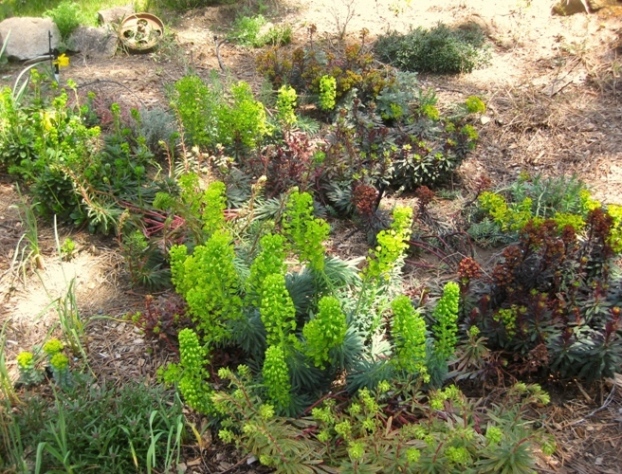
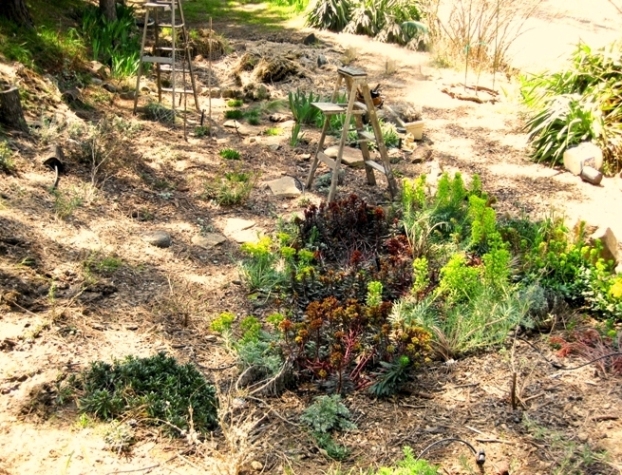
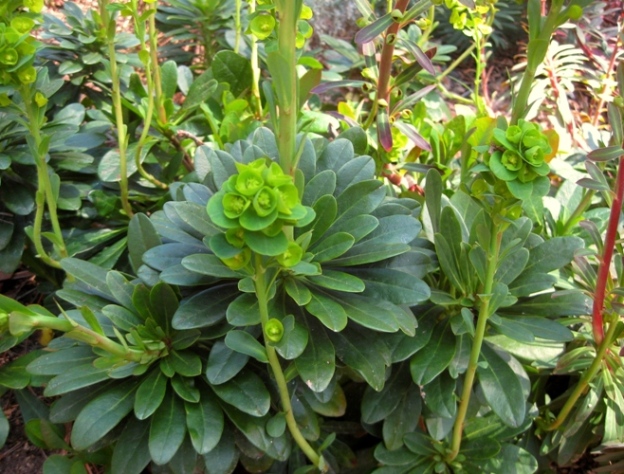
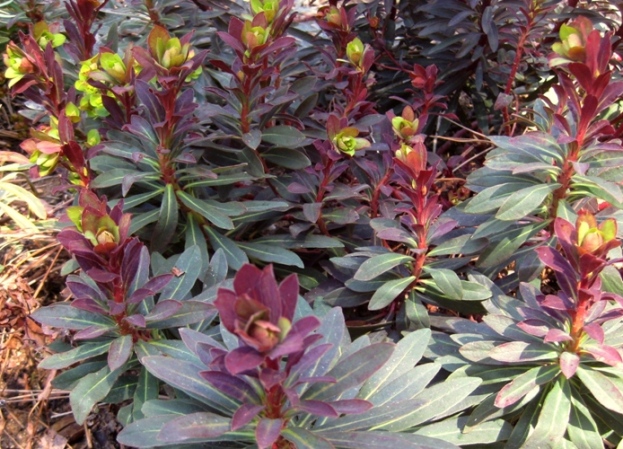
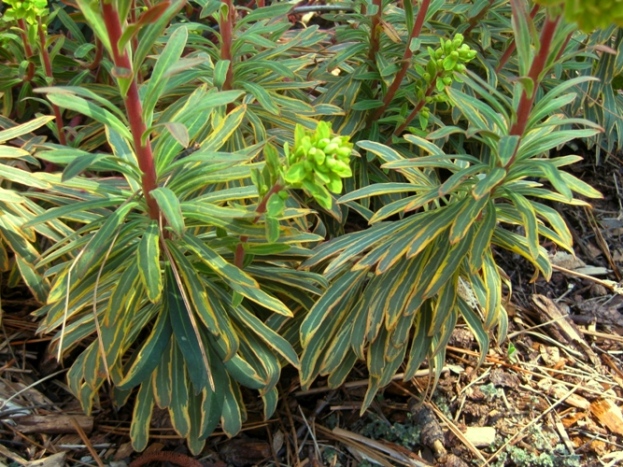

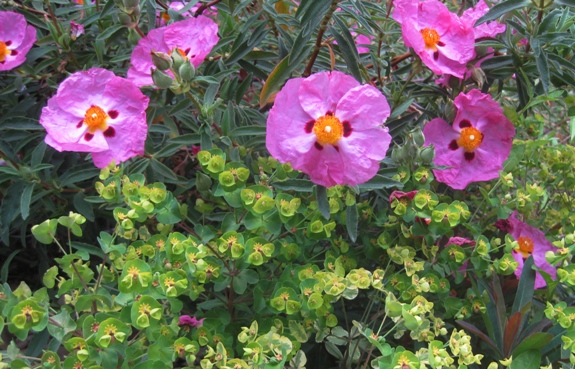
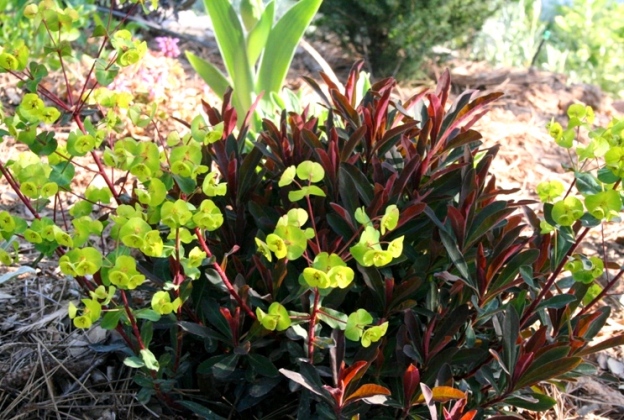
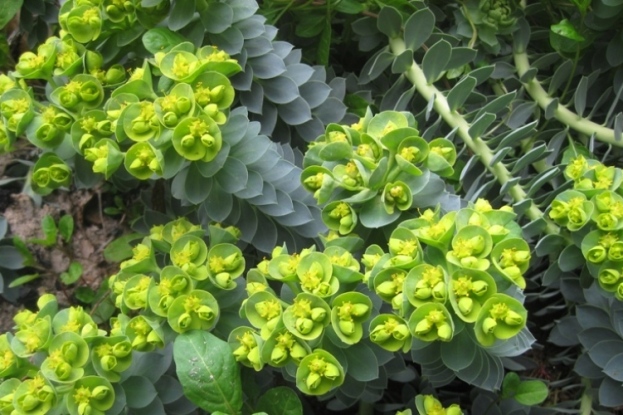
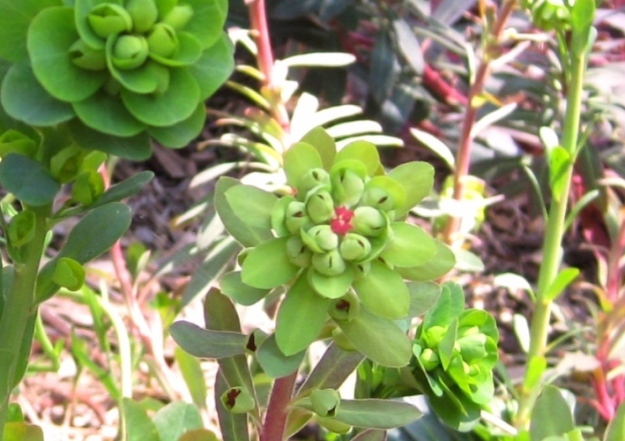
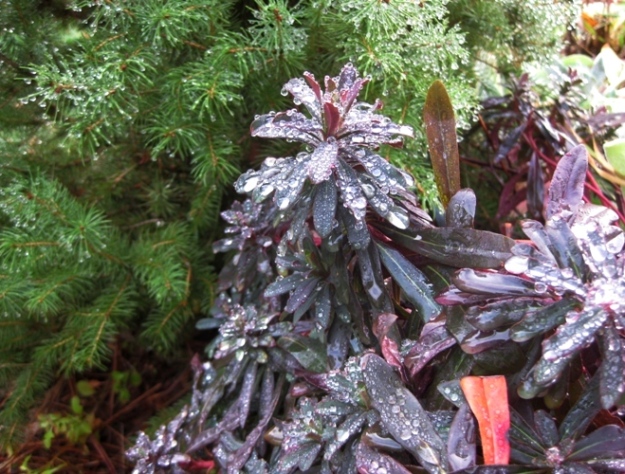
Pingback: Deer in the foothills | Sierra Foothill Garden